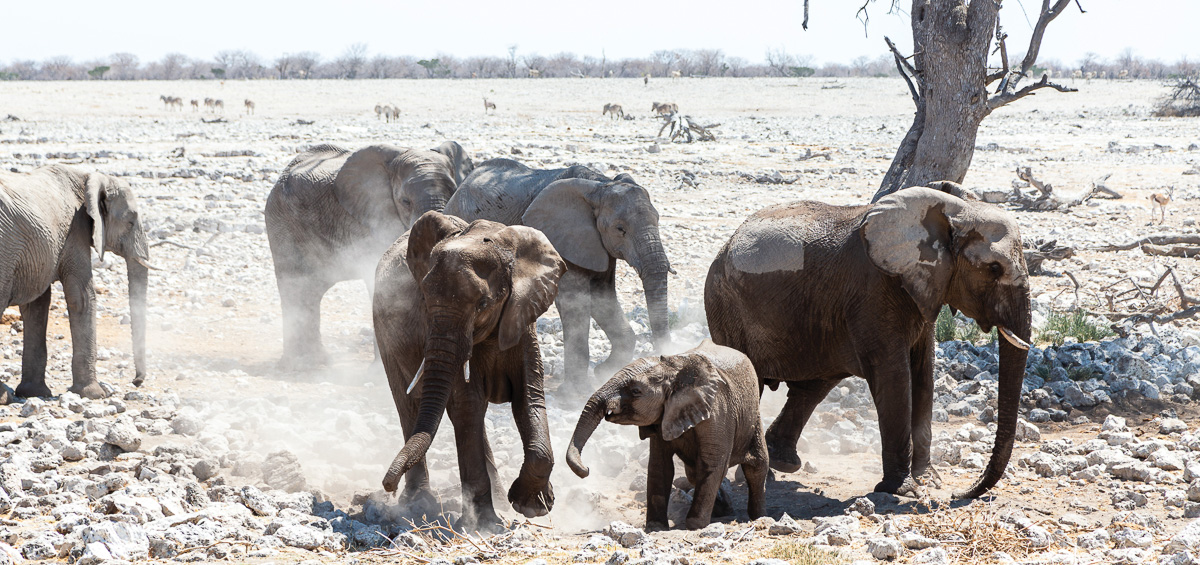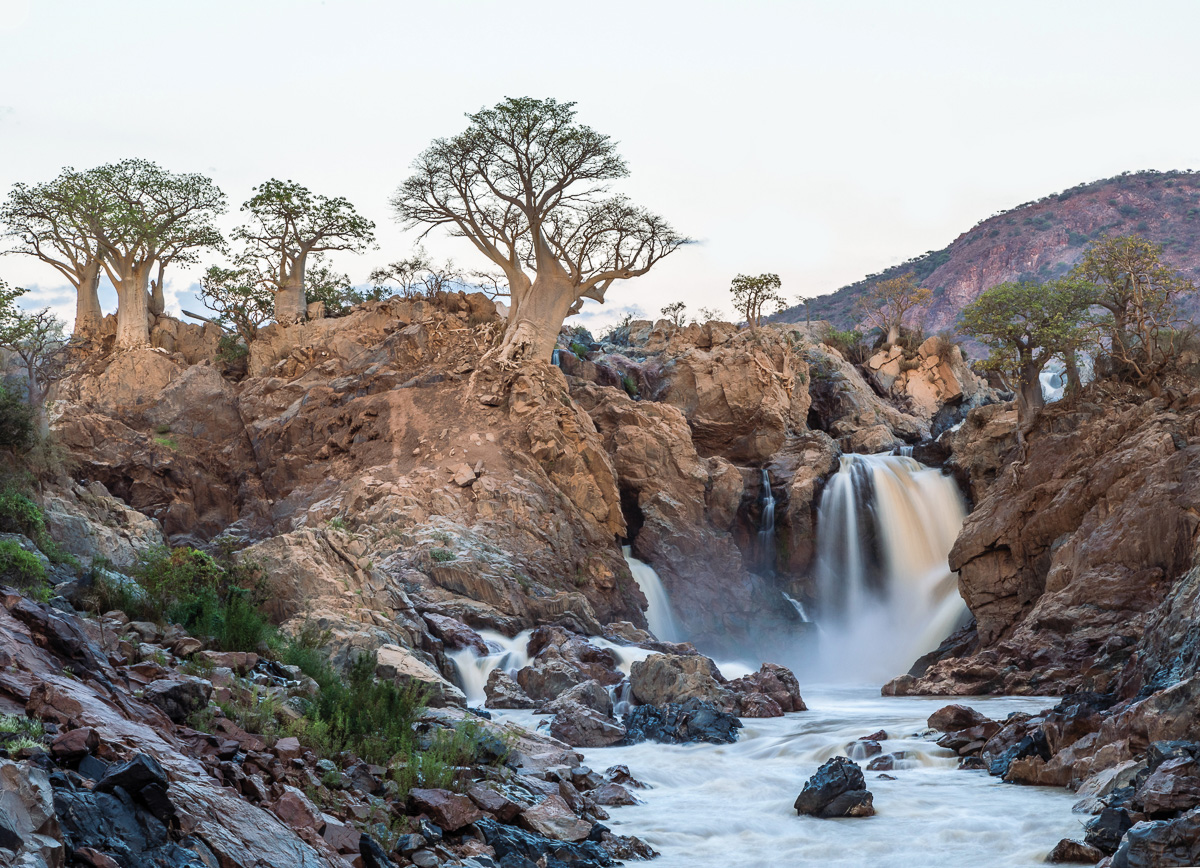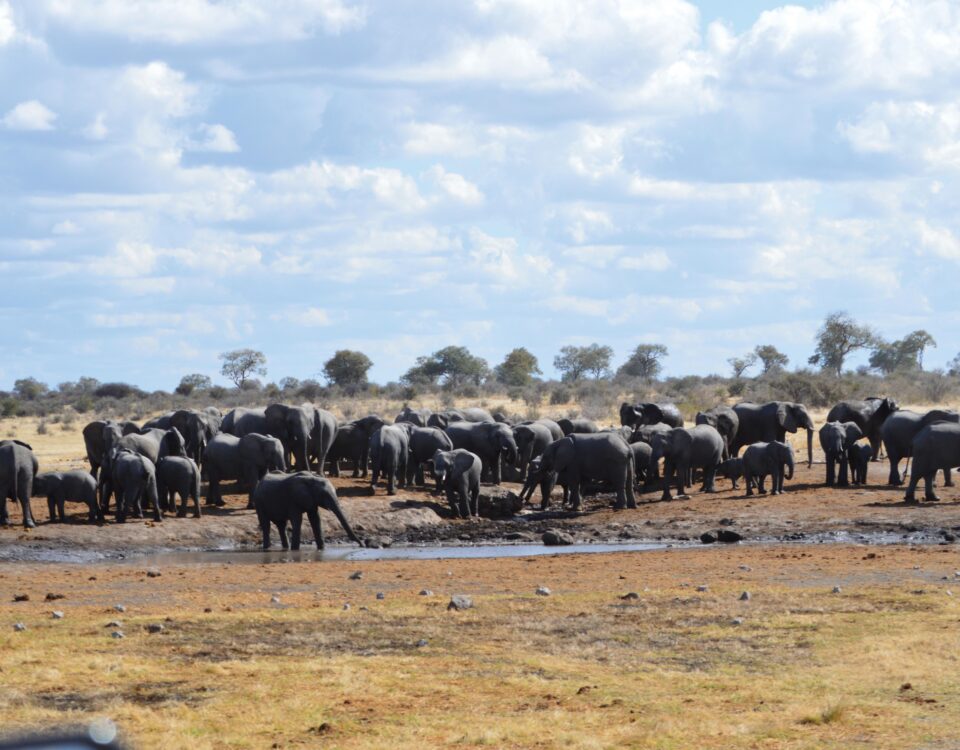
Elephants are thriving in Namibia
October 26, 2021
Capturing Moments, Spaces and Places through the Kaokoland
October 28, 2021[vc_row][vc_column][vc_column_text]What started as a school project turned into a family’s mission to help save the rhino population in southern Africa. The sad truth is that the rhino species as a whole is endangered. Namibia together with South Africa, Botswana, Kenya, Eswatini, Zambia, Zimbabwe and Uganda collectively host the world’s population of between 17,212 and 18,915 white rhinos – according to the Save The Rhino statistics. The white rhino is legal to breed and trade. By contrast, the black rhino is state-owned by law in Namibia. Only around 5,500 specimens are found globally.
More than a decade ago, Jaco Muller’s son decided to do a project on rhino conservation for a high school assignment. The presentation sparked an idea and led him to seek more information about white rhino breeding from internationally renowned breeder, John Humes. Equipped with more understanding of breeding and driven by a passion to bring rhinos back from the brink of extinction, the Rhino Momma Project came to be. John’s ultimate goal being to help repopulate Africa’s rhinos.[/vc_column_text][/vc_column][/vc_row][vc_row][vc_column width=”1/3″][vc_single_image image=”371988″ img_size=”full”][/vc_column][vc_column width=”1/3″][vc_single_image image=”371995″ img_size=”full”][/vc_column][vc_column width=”1/3″][vc_single_image image=”371998″ img_size=”full”][/vc_column][/vc_row][vc_row][vc_column][vc_column_text]Starting this journey with their first rhino in 2010, the Muller’s passion and interest around rhino breeding only grew from there. Not without caution, but nevertheless taking even bigger leaps. In 2012 the Rhino Momma Project brought 12 more rhinos into the breeding area. This led to the joyous birth of their first rhino calf in January 2013. Jaco mentioned that currently he breeds between 16 to 20 calves a year and that the goal is: “If I can breed 50 calves a year, that would be heaven on earth for me.”
The Muller family quickly came to terms with the magnitude of the task ahead – only to have the timing of the venture dampened by a cascade of obstacles. Due to an increase in poaching in Namibia and South Africa, the sales value of white rhinos dropped drastically. All this while breeding more rhinos meant there were more mouths to feed. Anti-poaching teams and veterinarians had to be brought in to assist with the welfare of the rhinos, which increased the financial burden even further. Although portions of the farmland were dedicated to growing Alfalfa (also called lucerne) in order to feed the rhinos, the above-mentioned factors coupled with a countrywide drought meant that a monstrous economic dilemma was brewing.[/vc_column_text][/vc_column][/vc_row][vc_row][vc_column width=”1/3″][vc_single_image image=”372003″ img_size=”full”][/vc_column][vc_column width=”1/3″][vc_single_image image=”372005″ img_size=”full”][/vc_column][vc_column width=”1/3″][vc_single_image image=”372009″ img_size=”full”][/vc_column][/vc_row][vc_row][vc_column][vc_column_text]Such setbacks do not come cheap. The price drop in the rhino trading business meant that selling the rhinos to other entities was no longer covering all the bills. It was time to come up with a different plan of action for the project to live on, and at the time the tourism sector seemed to be the best fit. Having built a farm where rhinos and other wildlife roam the land against the backdrop of stunning horizons, the Muller family thought to build a lodge where they could share these moments and spectacular views with local and international visitors alike.
And so the Kifaru Luxury Lodge & Bush Camp came to be. A safari paradise in the midst of tranquil Namibian bushveld. Where you can sit back and put your feet up poolside, enjoying a cocktail from the bar. As the night settles, you’ll be served some of the finest Namibian cuisine by candlelight to the nocturnal sounds of nature.
Adventurous guests can join the Rhino Momma Project team on a safari drive through the veld and get a ground-level look at where these rhinos roam. Do keep an eye… or an ear… out for any rhino mothers with inquisitive calves. Thereafter, retreat back to your private tented lodge elevated above the bush, where you can enjoy the breathtaking views from the comfort of your balcony with a refreshing sundowner. TNN[/vc_column_text][/vc_column][/vc_row][vc_row][vc_column][vc_column_text]Text Ruairi Hammond
Photographs Le Roux van Schalkwyk[/vc_column_text][/vc_column][/vc_row]

